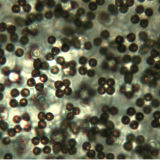Note: This is an archived post. The current version of this post is available here. This edible mushroom can be found in specialty markets under the names “Enokitake” and “” It can also be found in the wild in temperate areas across the Northern Hemisphere, but the wild mushrooms look nothing like the cultivated versions. Flammulina velutipes has many common names, including: Velvet Foot, Enokitake, Enoki, Winter Mushroom, Velvet Stem, Velvet Shank, Golden Needle Mushroom, and others. I am using the name Velvet Foot because it is among the most commonly used names and it sounds the most poetic. According to Wikipedia, Enoki is the Japanese name for the Chinese Hackberry Tree, a tree in the hemp family on which F. velutipes is often found. Thus, “Enokitake” means “Chinese Hackberry Tree Mushroom.” Wikipedia also says that the Chinese names for this mushroom translate to Golden Needle Mushroom or Golden Mushroom. ...







![#011: Characteristics of Kingdom Fungi [Archived]](https://www.fungusfactfriday.com/wp-content/themes/hueman/assets/front/img/thumb-small-empty.png)
